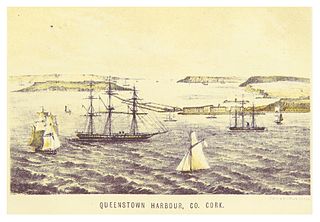
Major Francis Edward Henry Farquharson VC was a Scottish recipient of the Victoria Cross, the highest and most prestigious award for gallantry in the face of the enemy that can be awarded to British and Commonwealth forces.
The 97th Regiment of Foot was an infantry regiment of the British Army, formed in 1824 and amalgamated into the Queen's Own in 1881.
Events from the year 1824 in Ireland.
Events from the year 1831 in Ireland.
Events from the year 1875 in Ireland.
Events from the year 1830 in Ireland.
Events from the year 1857 in Ireland.
Events from the year 1826 in Ireland.
Louis William Desanges; Chevalier Desanges (1822–1905) was an English artist of French background, known today for his paintings of Victoria Cross winners.

The Indian Army has a distinguished history in which they won many battle and theatre honours. The practice of giving battle honours began with the East India Company who awarded these to the units of the native Indian corps in their presidency armies. The practice continued after the advent of the British Crown post-1857 when the armies of the East India Company became part of the British Indian Army and even after India's independence in 1947. The earliest conflict for which a battle honour was awarded was "Plassey" which was awarded in 1829 to the 1st Regiment, Bengal Native Infantry which served the East India Company in Bengal while the latest is "Kargil" in 1999 awarded to units of independent India's army for feats during the Kargil War.

General Sir Richard Chambré Hayes Taylor was a senior British Army officer who served in the Second Anglo-Burmese War, the Crimean War and the Indian Mutiny. Joining the General Staff in 1860, he was the British Army's Inspector General of Recruiting, then Deputy Adjutant-General to the Forces, briefly Adjutant-General, and finally for three years Governor of the Royal Military College, Sandhurst. He was also Colonel of the Queen's Own Cameron Highlanders and the East Surrey Regiment.

The Sebastopol Monument is a triumphal arch that is located in the Old Burial Ground, Halifax, Nova Scotia, Canada. The arch commemorates the Siege of Sevastopol (1854–1855), which is one of the classic sieges of all times. This arch is the 4th oldest war monument in Canada (1860). It is the only monument to the Crimean War in North America. The arch and lion were built in 1860 by stone sculptor George Lang to commemorate British victory in the Crimean war and the Nova Scotians who had fought in the war.

The Commander-in-Chief, Coast of Ireland was both an admiral's post and a naval formation of the Royal Navy. It was based at Queenstown, now Cobh, in Ireland from 1793 to 1919. The admiral's headquarters was at Admiralty House, Cobh.